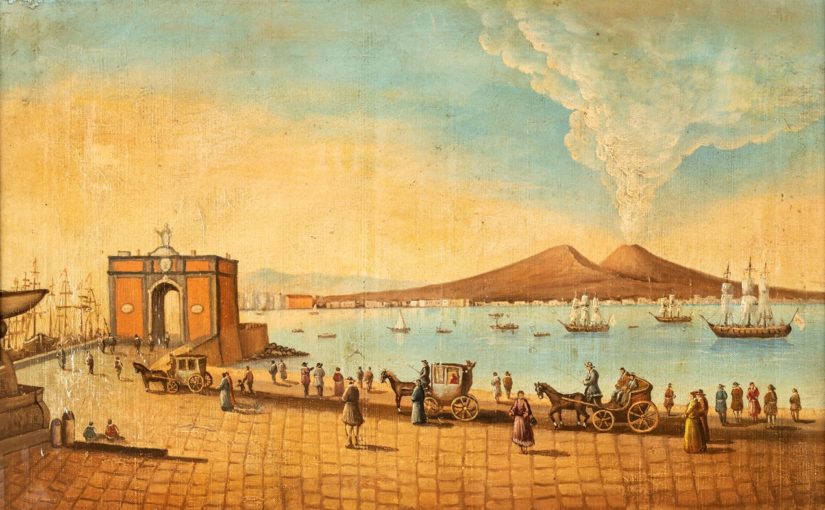Queen Maria Amalia of Saxony [1] bore Charles VII [2] King of Naples three male children, but sadly the firstborn – Filippo, Duke of Calabria – was mentally retarded and could not ascend to the throne. When Charles VII moved to Spain in 1759 to be crowned its King, he, therefore, took with him only his second-born, also called Charles [3] and left behind Ferdinand [4] , still a child, to inherit his other crown. Ergo the Kingdom of Naple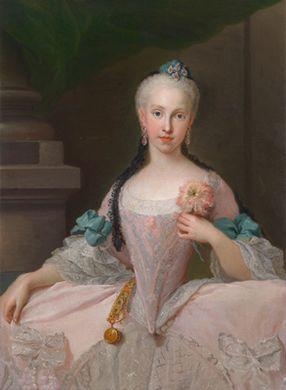 s effectively became a Regency ruled by Charles VII’s faithful Minister Bernardo Tanucci [5] and it remained so – as we shall see – even after Ferdinand reached adult age in 1767, was crowned King and married the Archduchess of Austria Marie Caroline in 1768.
s effectively became a Regency ruled by Charles VII’s faithful Minister Bernardo Tanucci [5] and it remained so – as we shall see – even after Ferdinand reached adult age in 1767, was crowned King and married the Archduchess of Austria Marie Caroline in 1768.
With Charles VII far afield in Madrid, Freemasonry in Naples found that times were good again and awoke from its sleep in 1762.
On 10th August 1763 the Adjunct Grand Master of the Dutch Grand National Lodge – Franc Van Der Goes [6] – founded the Lodge “Les Zeles”(Gli Zelanti) [7] and on 10th March 1764 elevated it to the role of Provincial Grand Lodge for the Kingdom of Naples under Dutch jurisdiction.
In March 1769 the Grand Lodge of England followed the example of the Dutch and after establishing the “Perfect Union Lodge N.368”, elevated it to Provincial Grand Lodge for the Kingdom of Naples with Cesare Pignatelli, Duke of San Demetrio, as its Master.
A month later the Grand Lodge of England installed the Neapolitan Nicola Manuzzi in the supervisory role of Provincial Grand Master for the whole of Italy and gave a patent to the “Bien Choice” Lodge of Kiliano Caracciolo and to the “Well Chosen Lodge N.444” of Francesco D’Aquino [8] Prince of Caramanico (shown in the protrait below). 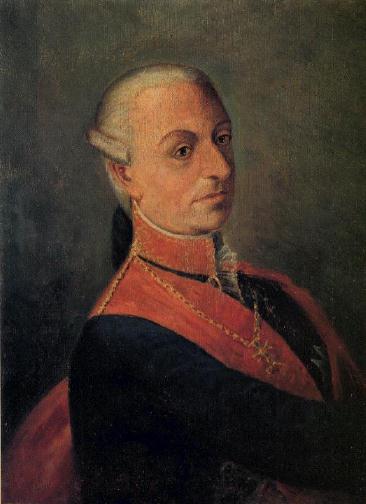 These two Freemasons came from the most important families of Naples and their names, together with that of the Pignatellis, repeatedly appear in the historical records of the Kingdom of Naples, its Masonic annals and the list of martyrs who died for the short-lived Parthenopean Republic.
These two Freemasons came from the most important families of Naples and their names, together with that of the Pignatellis, repeatedly appear in the historical records of the Kingdom of Naples, its Masonic annals and the list of martyrs who died for the short-lived Parthenopean Republic.
In 1770 the grand Masonic manoeuvres came to an end with the Grand Lodge of
Holland and the Grand Lodge of England agreeing to place all their Lodges in the Kingdom of Naples under the English jurisdiction alone. Directly from London came the appointment of Cesare Pignatelli – from the “Perfect Union N.368”- to the Office of Grand Master of the new and unified Provincial Grand Lodge of Naples [9]. The accomplishment, however, was perceived as a serious attempt by the Grand Lodge of England to convert the Kingdom of Naples into one of its own Masonic Provinces and it was not regarded kindly by both Queen Caroline and the Court of Vienna, whose dissatisfaction with the state of things in that Kingdom went even further. Charles VII had been given the Crown of Spain and was living thousands of miles away but he was still running the Kingdom of Naples through his faithful Minister Bernardo Tanucci [10]. Austria’s powerful sole ruler Queen Marie Theresa – shown below – would never have consented 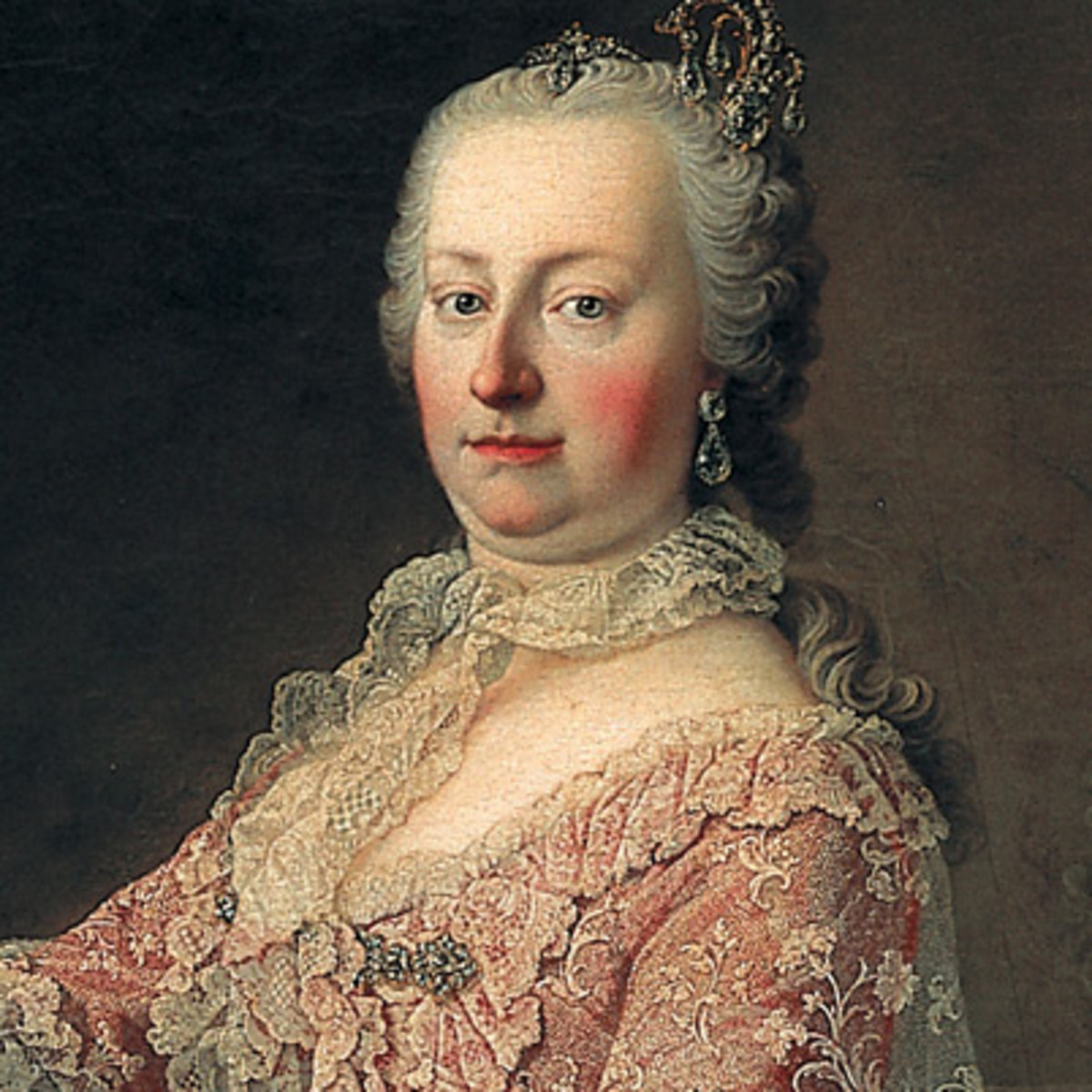 to give one of her daughters in marriage to Ferdinand in the knowledge that his father, would have continued pulling the strings of that reign even from afar. The Hapsburg Queen also disliked the Marquess Bernardo Tanucci whom she considered to be no more than just a good administrator and never really considered him to be a man of the Enlightenment.
to give one of her daughters in marriage to Ferdinand in the knowledge that his father, would have continued pulling the strings of that reign even from afar. The Hapsburg Queen also disliked the Marquess Bernardo Tanucci whom she considered to be no more than just a good administrator and never really considered him to be a man of the Enlightenment.
But she was not entirely right in holding him in such a low opinion. Tanucci was an innovator, an inspired reformist who on many occasions had clashed with the clergy for some of the reforms that he introduced. He abolished many feudal privileges and worked endlessly to affirm the superiority of the State over the Church. Tanucci expelled the Jesuits from the Kingdom of Naples and even abolished the tribute to the Church that the King had to pay as a kind of vassalage. During the Regency, he directed much effort at eliminating malaria and maintaining public order, albeit only in Naples for he accepted that brigandage in the territories of the Kingdom could never have been successfully wiped out.
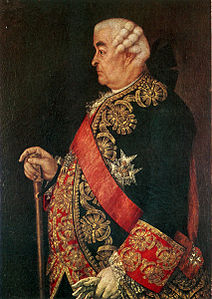 Bernardo Tanucci – shown in the portrait above – was a rather course Tuscan character, physically ugly and totally dedicated to his work. The French ambassador at the Court of Naples wrote: “the slightest alteration of his health would completely change his mood. The life of this Kingdom is at the mercy of a cold” [11].
Bernardo Tanucci – shown in the portrait above – was a rather course Tuscan character, physically ugly and totally dedicated to his work. The French ambassador at the Court of Naples wrote: “the slightest alteration of his health would completely change his mood. The life of this Kingdom is at the mercy of a cold” [11].
FERDINAND BOURBON
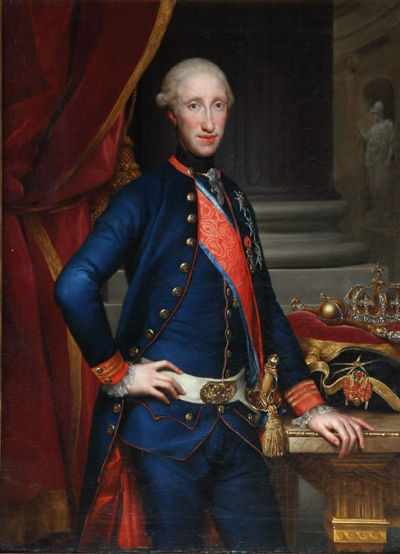 Neither the Marquis Tanucci nor Charles VII had ever really cared about the importance of providing the religious and extremely superstitious population of the Kingdom, with any sort of education.
Neither the Marquis Tanucci nor Charles VII had ever really cared about the importance of providing the religious and extremely superstitious population of the Kingdom, with any sort of education.
The intellectual laziness of Charles VII was undoubtedly the reason behind it. His apathy went even as far as showing complete disinterest in nurturing and educating his son Ferdinand; an absence of sagacity that proved incidental to the events that would later unfold. Tanucci saw that this worked to his complete advantage and left the royal child in the care of Domenico Cattaneo, Prince of San Nicandro [12] who his contemporaries described as an “ignorant, incapable, false, rough and vicious “ individual. Cattaneo had been told not to educate the royal child’s mind but only instruct him on physical discipline and the pleasures of the flesh.
It is said that Ferdinand never opened a book and hated the sight of ink and quill to the extent that when, as King, he attended the Councils of State he preferred to rubber-stamp the documents rather than affix his signature on them. When pressed to deal with some business himself, he had the habit of replying: “My wife knows everything” (Ma femme sait tout) and drop the matter. 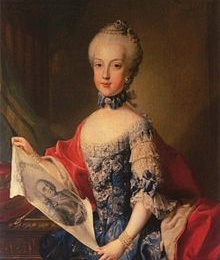
Ferdinand enjoyed only hunting, fishing, open spaces, riding and naturally women and in complete contrast to his young Austrian born wife – who was fully fluent in the Italian language as well as in French and Spanish – Ferdinand preferred to speak mainly the Neapolitan dialect [13]. In fact, no other monarch was more unconventional than him. But the man deserves some understanding. Contrary to past rulers, Ferdinand was born in Naples and he loved his city and its people. He had learnt the language of the lower class by mingling and playing, in his teenage years, with the street urchins – or “scugnizzi” – and with the rascals and petty criminals called “lazzaroni” [14]. He liked their company and they cherished him; they called him “Re Nasone” (Big Nose King) and “Re Lazzarone” (Rascal King), two nicknames that perfectly fitted him.
In his younger days, Ferdinand’s favourite past time had been to keep a shop in one of the poorest quarters of the city where dressed in shirt sleeves and apron he sold the fish he had caught at Posillipo and displayed a genius for haggling with his customers.[15] Soon after Ferdinand and Caroline’s wedding, the Austrian princess’s brother Joseph Haupsburg – the enlightened future Joseph II of Austria, shown int the portrait below – travelled to Naples to pay the couple a visit. 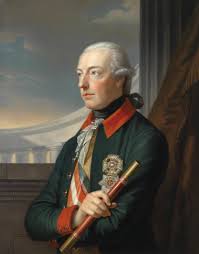 The occasion was meant to look like a courtesy call but in reality, Joseph had been dispatched by his mother Maria Theresa of Austria, to check and inform her on how the relationship between the two newly wedded was progressing. Did they tolerate each other ‘s company? Were they physically attracted and likely to have an heir soon?
The occasion was meant to look like a courtesy call but in reality, Joseph had been dispatched by his mother Maria Theresa of Austria, to check and inform her on how the relationship between the two newly wedded was progressing. Did they tolerate each other ‘s company? Were they physically attracted and likely to have an heir soon?
Joseph described King Ferdinand with these words: “(..) he is a ridiculous individual. He has an uncombed long hair of caffelatte colour which he never powders, an enormous nose that almost enters his mouth, irregular teeth and very small piglet like eyes. His hands emanate an unpleasant smell and he dresses without any code whatsoever, in multi-colours.”
The Italian adventurer Giacomo Casanova in his memoirs noted that Ferdinand was “a savage who swore every time he opened his mouth and who surrounded himself with dubious women and hangers-on passing themselves as gentlemen”.
*** — ***
The years between 1770 and 1776 had seen Freemasonry spreading so far and wide as to alarm many of the Courts in Europe including of course that of the King of Naples who on 12th September 1775 signed a new edict against the Order. Tanucci had been so concerned by the increasing presence of such an enlightened force in the realm that he even resolved to ignoble tactics to put an end to that liberal movement.
On 1st January 1776 as a result of a plot that Tanucci had schemed up and put in practice with the help of some corrupted “lazzaroni”, the Brethren of the Provincial Grand Lodge (under the England obedience) were arrested and Francesco d’Aquino Prince of Caramanico, compelled to repudiate Freemasonry. The episode stirred much sensation amongst the many international aristocrats who were either passing through or residing in Naples. Amongst them, for example, was the Duchess of Cartey – wife of Philippe Louis d’Orleans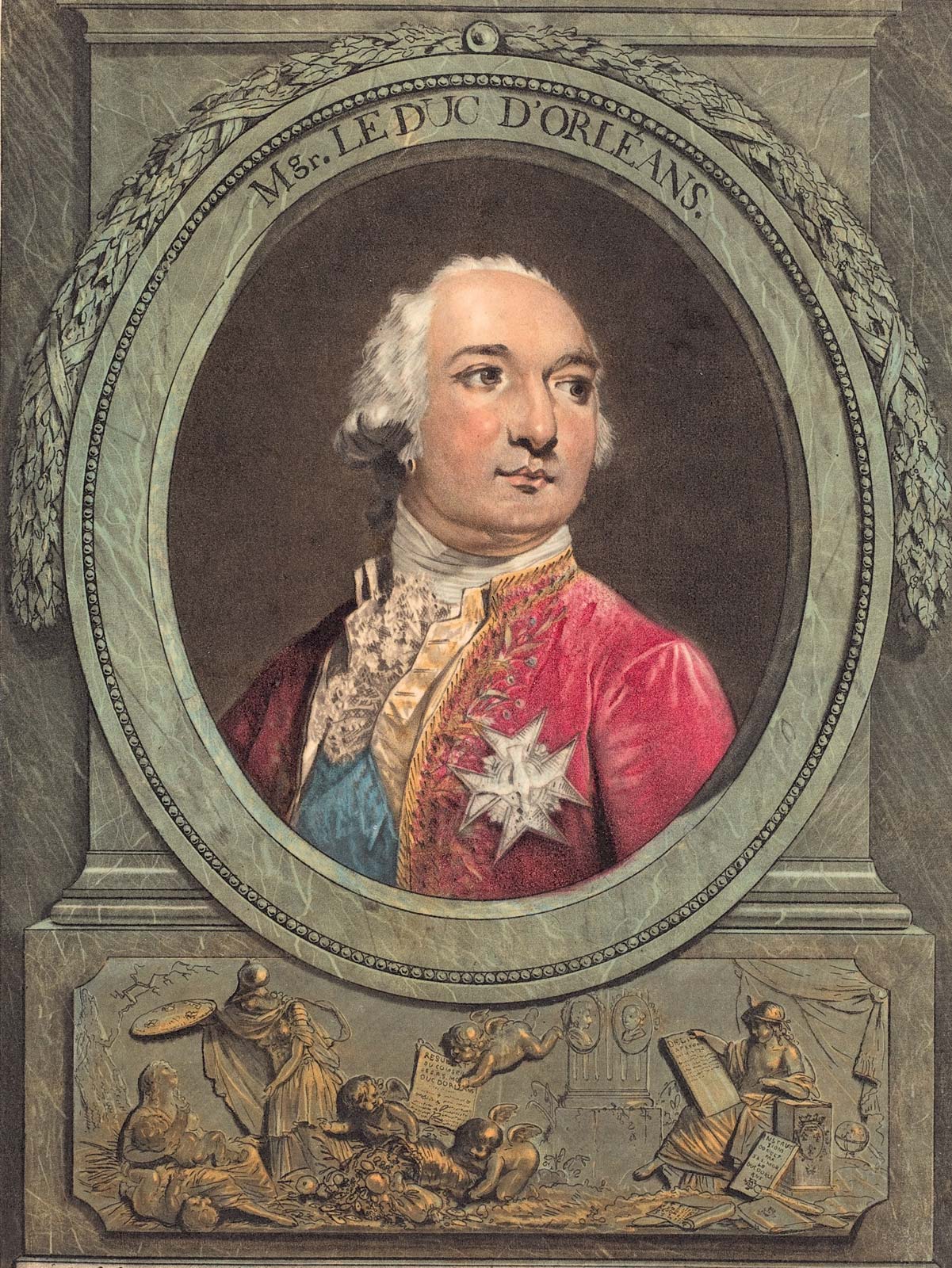 , Grand Master of the Orient of France [16] and Ferdinand’s sister-in-law Marie Christine and her husband Prince Albert of Saxony (son of the King of Poland and a freemason). They all expressed their condemnation for the events that had led to the arrest of the Freemasons.
, Grand Master of the Orient of France [16] and Ferdinand’s sister-in-law Marie Christine and her husband Prince Albert of Saxony (son of the King of Poland and a freemason). They all expressed their condemnation for the events that had led to the arrest of the Freemasons.
*** — ***
Dark clouds could be seen gathering on the horizon for the old social Order. The 18th century, the reign of Aristocracy and of the beautiful spirit, of the courtly priests and the powdered Marquises, of the gentlemen with wigs and the dance masters, of the brilliant and the perverse, the frivolous and the fashionable, was soon to sink into social unrest and blood !
Although the American war of independence [17] was coming to an end by 1783, the French revolution was just around the corner. And whilst the disinterested young Ferdinand was running around the woods, his very able wife Caroline of Hapsburg was making plans to run the kingdom herself and drive it in the direction that matched her liberal ideals and pleased Austria.
Thanks to the dexterity of Marie Therese, a clause had been inserted in Caroline’s marriage contract with Ferdinand, whereby on the birth of their first male child Caroline would have gained the right to be present at all the State Council meetings.
Seeing the absence of interest in matters of State by her husband, Caroline put herself to work to end Charles VII controlling her Kingdom by proxy through the ageing Marquis Tanucci. She had experienced the Enlightenment at the Court of Vienna and after the Marquess had plotted against the Freemasons, Caroline wanted him removed from office at all costs. Years later, Napoleon would describe Caroline as “le seul home de son royaume” (the only man in her Kingdom) [18]
With the arrival of the enlightened free-minded Caroline in 1768, the Masonic lodges had enjoyed a period of growth.
In 1773 Francesco D’Aquino Prince Caramaico had founded a National Grand Lodge called “Lo Zelo” that was independent of foreign jurisdictions and to whose Grand Master, the Duke of San Demetrio, would later be assigned the task of establishing a free and sovereign Provincial Grand Lodge of Naples [19].
When the trial of the freemasons begun, the WBro Francesco D’Aquino Prince Caramanico, who knew full well that Caroline was by “de facto” the Monarch, lobbied her for leniency towards the Brethren. Caroline, for her part, recognising the importance of the support she could receive from the powerful Masonic body in her quest to control the Kingdom, leaned enough heavily on her intellectually idle husband so as to convince him to display compassion. The lobbying succeeded and the Court dispensed light sentences for the convicted men. But more importantly, the trial considerably weakened the reputation of the Minister Tanucci who was thereafter seen as a deceitful and repressive person, unfit for office. He resigned and retired to the country and his place was filled by Giuseppe Beccadelli-Bologna, Marquis La Sambuca – a former Ambassador for the Kingdom of Naples at the Court of …Vienna!
Queen Caroline, the Enlightenment ideals and the Freemasons appeared to have won the day.
(CONTINUES)
WB Leonardo Monno Anglisani
This work is licensed under a Creative Commons Attribution 4.0 International Licence. The author forbids any reproduction or publication of this article, in full or in part, without his explicit authorisation
[1] Dresden 24/11/1724 – Madrid 27/09/1760
[2] From 3 July 1735 to 6 October 1759
[3] He became Charles IV, King of Spain, at the death of his father
[4] Naples 12.01.1751-14.01.1825
[5] Stia(Arezzo) 20 February 1698 – Naples 29 April 1783 ; from “La Massoneria nel Regno di Napoli dal 1750 al 1789” published by Nicola Ferraro (source : htpp://esoterismografico.blogspot.co.uk/2010_03_01_archive.html )
[6] The Captain of a Dutch vessel which was harboured with the Frigate “Phoenix” in Naples at the time
[7] amongst the list of illustrious subjects who requested the patent from the Dutch GNL were Caracciolo, and Naselli. The Lodge’s Officers were : WM Carlo Muzi, SW Francesco Maurizio, JW Vincenzo Pignatelli, Segr. Carlo Cianci , Treasurer George Tierney (Irish)
[8] “La Massoneria nel Regno di Napoli dal 1750 al 1789” published by Nicola Ferraro (source : htpp://esoterismografico.blogspot.co.uk/2010_03_01_archive.html)
[9] Ditto
[10] ditto . Bernardo Tanucci, born Jan. 20, 1698, Stia, Italy—died April 29, 1783, Naples
[11] http://baroque.it/societa-barocco/carlo-iii-e-il-regno-di-napoli.html
[12] Born in Naples 20 Decembre 1696 – died at Barra 2 Decembre 1782 also Duke of Termoli and Count of Aversa .
[13] Later in life, even Caroline fell into the bad habit of conversing in Neapolitan dialect with both Ferdinand and her entourage.
[14] They were the second born children of noble Neapolitan families who inherited neither a title nor a slice of their family’s wealth
[15] “Nelson and the Neapolitan Jacobins” page xii – H.C. Gutteridge
[16] The Duchess of Cartey , herself a mason (from “La Massoneria nel Regno di Napoli dal 1750 al 1789”)
[17] 1775- 1783
[18] From the article titled La Floridiana, by Riccardo Carafa, page 65 published in “Napoli nobilissima” a magazine of Neapolitan arts . Volume 1
[19] “I Borbone di Napoli: una grande dinastia”, Ed.Mondo libri, 2005, pag.74
- His Majesty’s Servant , David Garrick Esq – Freemason ? - June 7, 2024
- Influencia de la Masonería en Chile - April 29, 2024
- Pomegranate in Freemasonry – its significance - March 11, 2024

